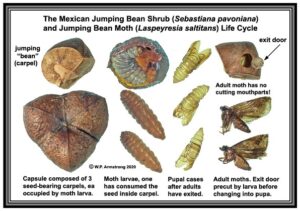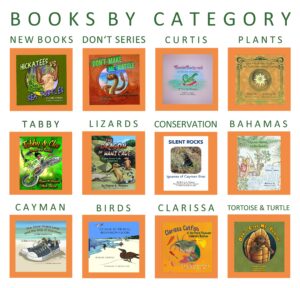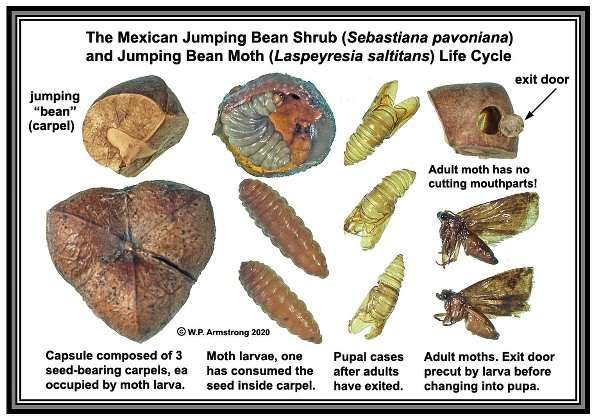When I was a child, my parents bought me a package of Mexican beans, frijoles saltarine. I was fascinated to learn why the beans moved.
Over time I forgot about them, until recently when I was reading an article about midge larvae that can fling themselves 36 times their body length.* The article got me thinking again about those moths inside of galls inside of beans.
That’s right, it’s a baby moth, Cydia saltitans, or larva, inside the bean. The moth, lays its eggs in the flower of the Mexican shrub Sebastiania pavoniana, so the eggs end up inside the seeds. The larva eats itself a chamber in the seed, or “bean,” and lives there. (Of course, the seeds aren’t beans like the legumes we eat.)
The larva may live inside the bean for months. It attaches itself to the chamber with a silk-like thread. When the bean is warm, say by being held in a hand, the larva moves, pulling on the threads, causing it to “hop.” That’s why they are called jumping beans!
Too much heat, though, and the larva dies. If you want to prolong your larva, the beans need to be kept in a cool, dry place . . . until then, it’s time to mimic the monsoon season. They should be soaked, but not submerged, for a few hours a couple of times a month.
Eventually, the larva metamorphoses into an adult moth, drills a hole in the side of the seed and flies off. The moth only lives for a few days. How sad.
The jumping beans come from a restricted place in Mexico where the host shrub grows, Alamos, Sonora, which calls itself the “Jumping Bean Capital of the World.”
The jumping beans are one of my favorite childhood memories. Adding in positive thoughts is a good thing right now. I’d love to hear about one of your favorite memories. Please share in a comment below.

*Grace Farley in Journal of Experimental Biology
Book Note: I was a budding scientist as a child. If you have one of those, or suspect you might, please introduce them to my fun science books. I weave science in adventure tales and fun rhyming stanzas–to make learning science fun! Grab a copy of one of my fun science stories today at My Books.

